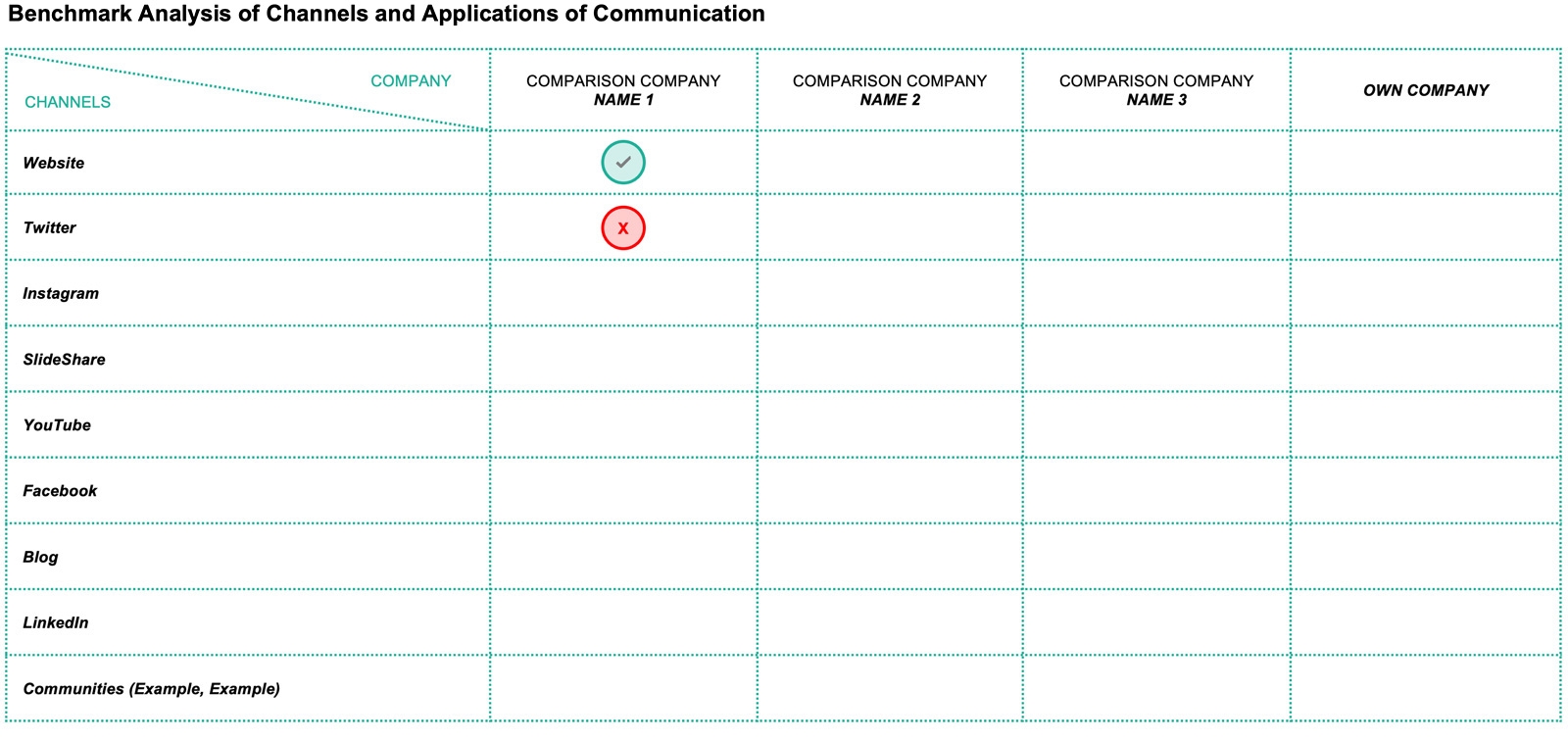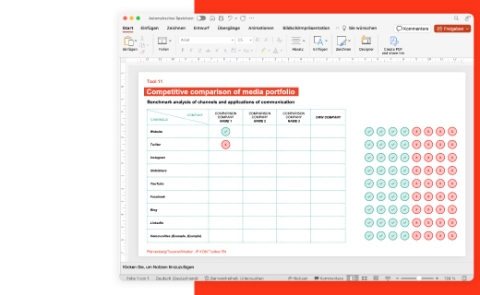Competitive Comparison of Media Portfolio

Guiding question
Which channels and applications do competitors use to communicate?
Objectives
- Know the communication offers of competitors
- Know standards in the industry and gaps in own media portfolio and that of competitors
- Identify the best media portfolio and build the benchmark
- Derive recommendations for optimizing your own media offering
Implementation
The table shows which company uses which channels and applications. If applicable, these are briefly described. Benchmarking is performed in the following steps:
- Selection of peer companies according to criteria such as Market, Size and Regional positioning, Market capitalization. If there are no best practices in the industry or if the own company already represents the benchmark, it is recommended to orientate on more developed industries (such as the automotive industry, telecommunication, consumer goods industry) and/or to extend to international examples.
- The table with the own company and the competitors as well as the channels and applications is set up and further completed in the course of the analysis process.
- It identifies which companies use which channels and applications.
- The comparative analysis reveals the benchmark as well as gaps and leading positions of the own company, if applicable.
Theory: Benchmarking
The starting point of benchmarking is the question of excellence as formulated by Peters/Waterman in their publication "In Search of Excellence" (1982): What characteristics and courses of action distinguish successful companies in a market from less successful competitors?
A benchmark is a standard of comparison. Accordingly, benchmarking refers to the comparative analysis of a company's own performance or processes against a defined reference value or process. In many areas of business management, benchmarking is a metrics-driven task – with the quality criteria for metrics: Objectivity, validity, reliability. A distinction is made between partial benchmarking methods, in which key figures and/or performance indicators are compared without considering cause-effect relationships, and multidimensional benchmarking methods, which analyze cause-effect relationships.
In the competitive analysis of communication, qualitative benchmarking is mostly used. This involves heuristically identifying and comparing best practices. The highest standards in an area are elevated to benchmark status.
